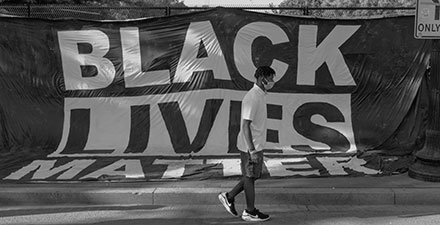Advancing racial equity for effective environmental grantmaking

We are alive in what will, no doubt, be considered a pivotal moment for the power of philanthropic giving. As equity emerges as the lynchpin of decades of investment for generations of impact, Environmental Grantmakers Association (EGA) is clear on its role to facilitate the shift from discussion to tangible action and offers deep data to affect the course of racial equity as a relevant lens for environmental philanthropy.
At 35 years, EGA is an association of over 200 environmental grantmaking entities and growing. Their mission is simple: EGA promotes just, effective philanthropy for people and the planet. As part of their mission, members are on a journey to “walk the talk” and fulfill the tenets of its Racial Equity Point of View (POV). EGA has a long-standing history that includes more than 10 years of data collaboration with Candid, to support their Tracking the Field (TTF) research program.
It is, thus, no surprise then, that EGA signed on as a founding partner, joining more than 70 philanthropic and philanthropic serving organizations committed to standardizing the data for greater transparency and accessibility. Together, we are reducing the reporting burden on nonprofits and supporting the sector to better track funding disparities discernible in relation to race/ethnicity, gender, sexual identity, and ability status.
EGA is also wasting no time to realize the potential of carefully collected data to advance racial equity in the field.
Setting a baseline for advancing racial equity
It’s nearly impossible to create change, at the scale required, without research-based benchmarks on where the social sector currently stands. For racial equity, this is doubly true. After all, good research requires the essential ingredient of high-quality data.
The stakes are high, but there’s good news: EGA has leveraged the vast reach of Candid’s demographic data to help unlock critical insights for equity in environmental philanthropy. In their recent Racial Equity in Environmental Philanthropy reporti, EGA used Candid’s demographic data to set a baseline on the current demographic landscape of EGA’s members’ grantees. Their research revealed that Black, Indigenous, and people of color (BIPOC) individuals are underrepresented in all levels of organization roles among environmental grantees, especially in higher-level leadership and c-suite decision-making roles, including organization leader, board members, and senior staff.
EGA found only 21% of environmental grantees who reported have leadership that identifies as BIPOC—compared to 25% for nonprofits across all issue areas. BIPOC individuals are underrepresented in organizational leader roles. These percentages are stark when compared to the available pool of talent in BIPOC individuals—which make up 42% of the overall population in the U.S. The report also notes that the underrepresentation is seemingly uncoupled from overall staff representation. In positive news, EGA’s report found that environmental grantees are showing higher adoption rates for 10 out of the 14 equity strategiesii outlined in Candid’s demographic data survey, compared to nonprofits across all subject areas. This is a positive sign that environmental grantees are taking steps to address long-standing racial inequities in the sector.
The EGA report features a data-led narrative on environmental grantmaking to BIPOC-led organizations filling a knowledge gap in the conditions of racial justice funding for equity. EGA is using these novel insights to encourage decision-makers in their membership to leverage their power and drive meaningful progress.
For example, EGA has called on funders to commit to directing 30% of environmental funding to BIPOC-led grantees by 2025.
EGA’s report also highlights the characteristics of BIPOC-led organizations and how they differ from other environmental grantees in terms of geography, strategy and gender-makeup. These insights include:
- BIPOC-led environmental grantees are filling the gender gap by having a higher representation of underrepresented gender groups (female and nonbinary) in their leadership compared to nonprofit grantees in general.
- BIPOC-led grantees are more likely to focus on health and justice work, employ grassroots organizing as their program strategy, and serve the traditionally underfunded Southeast region of the United States.
- The largest environmental grantees are less likely to have a BIPOC leader or to have a majority of the board identify as BIPOC, compared to other nonprofit organizations of a similar size in the sector. The largest environmental nonprofits are slower to diversify their leadership demographics compared to large nonprofits in general.
With Candid’s demographic data now integrated, EGA’s Tracking the Field database of environmental grants data not only provides funders with a practical tool for assessing equity in their grant portfolios. It also allows them to measure their progress toward their 30% equitable funding goal.
These kinds of early efforts demonstrate the criticality of data and research in supporting transparent, intentional funding decisions.
If you want to follow EGA’s lead and learn more about how your organization can participate in Demographics via Candid, please visit our website or reach out to our team.
i The Environmental Grantmakers Association’s member-only Racial Equity in Environmental Philanthropy report includes Candid demographic data on 1,240 EGA grantees, comprising about 31% of their members’ domestic recipients. It also compares these recipients to the 43,817 nonprofits across all subject areas for which Candid has demographics data.
ii The Equity Strategies in the Candid profile were developed in collaboration with Equity in the Center.







